Chapter 10: Two Antidotes to Pain
We can’t really bring our stories all the way home until we face the rough feelings tied to them.
If it hasn’t hit you yet, writing about the hardest moments of our lives can stir up more pain than we expect.
The two best ways I’ve found to ease that pain are through touch and community.
Part of me wishes I had a different answer. Touch and community aren’t things we can give ourselves the way others can, and that’s a vulnerable thing to realize—that sometimes I can’t do it alone.
Back in 2019, when I was writing the first draft of what you’re reading now, I still thought I could heal myself. I thought I was going to conquer the “disorder” I had been diagnosed with. I was wrong.
I didn’t need to conquer myself. I needed to love and forgive myself. And I couldn't do that fully until I saw love and forgiveness reflected back to me, over and over, through the eyes and touch of people I trusted.
It was the steady love of the woman who's now my wife, and the vulnerability and integrity of the Veteran Rites community that became my tribe, that took me over the finish line. We did it together.
Both gave me the kind of connected touch and deep listening I'd been missing since my first deployment. Over time, I trusted them with the most painful stories of my life—the cries my body had been holding in for years.
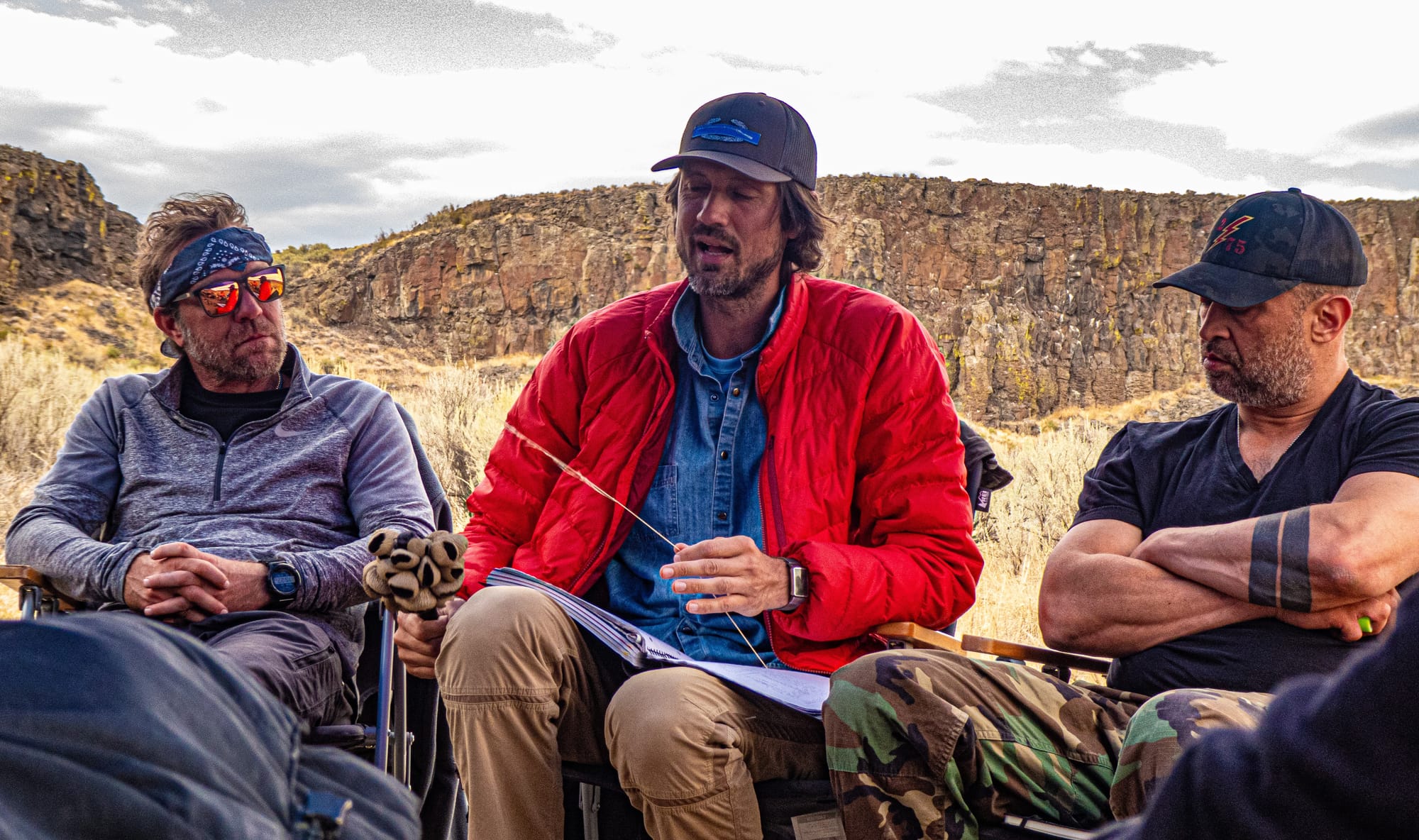

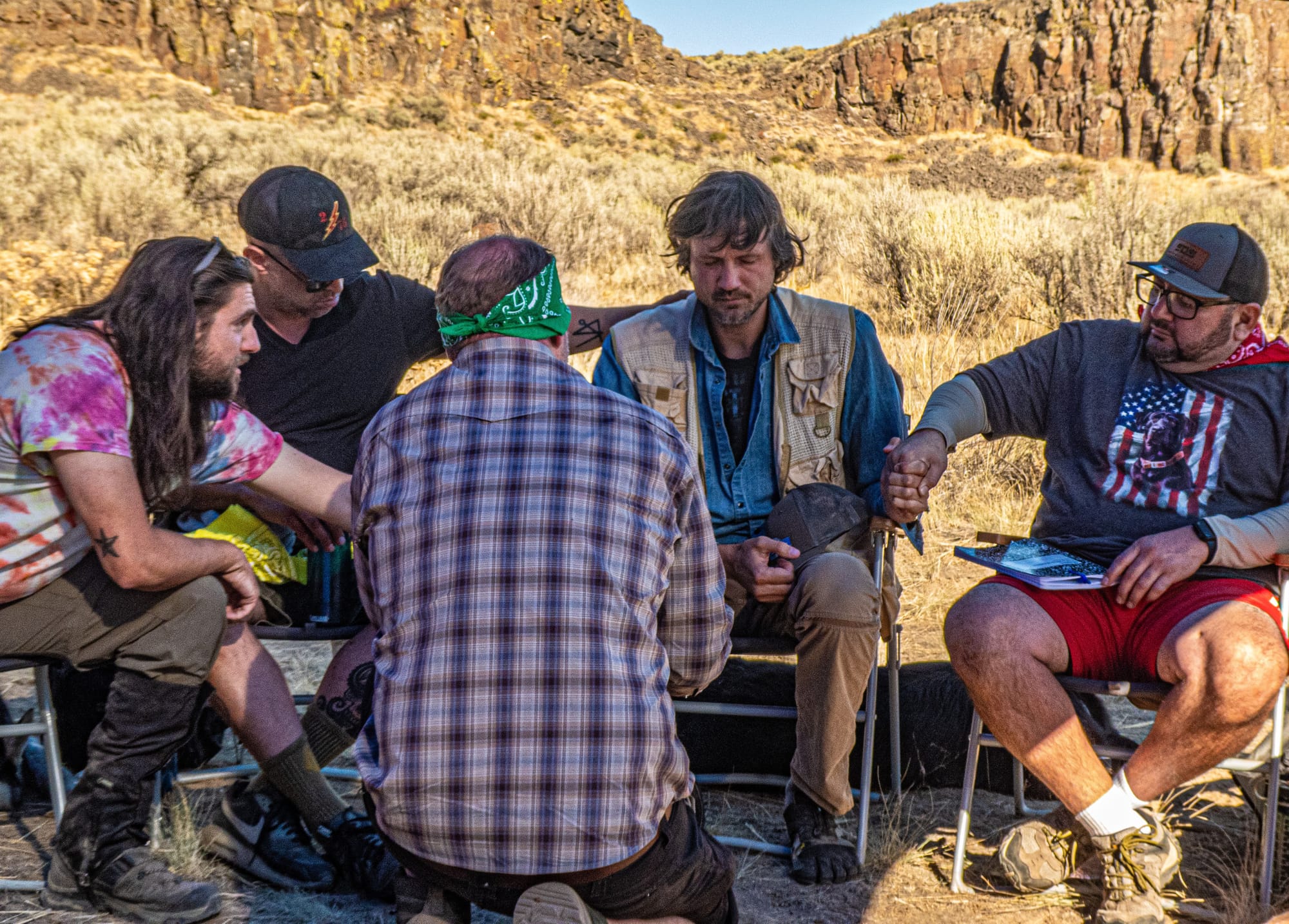
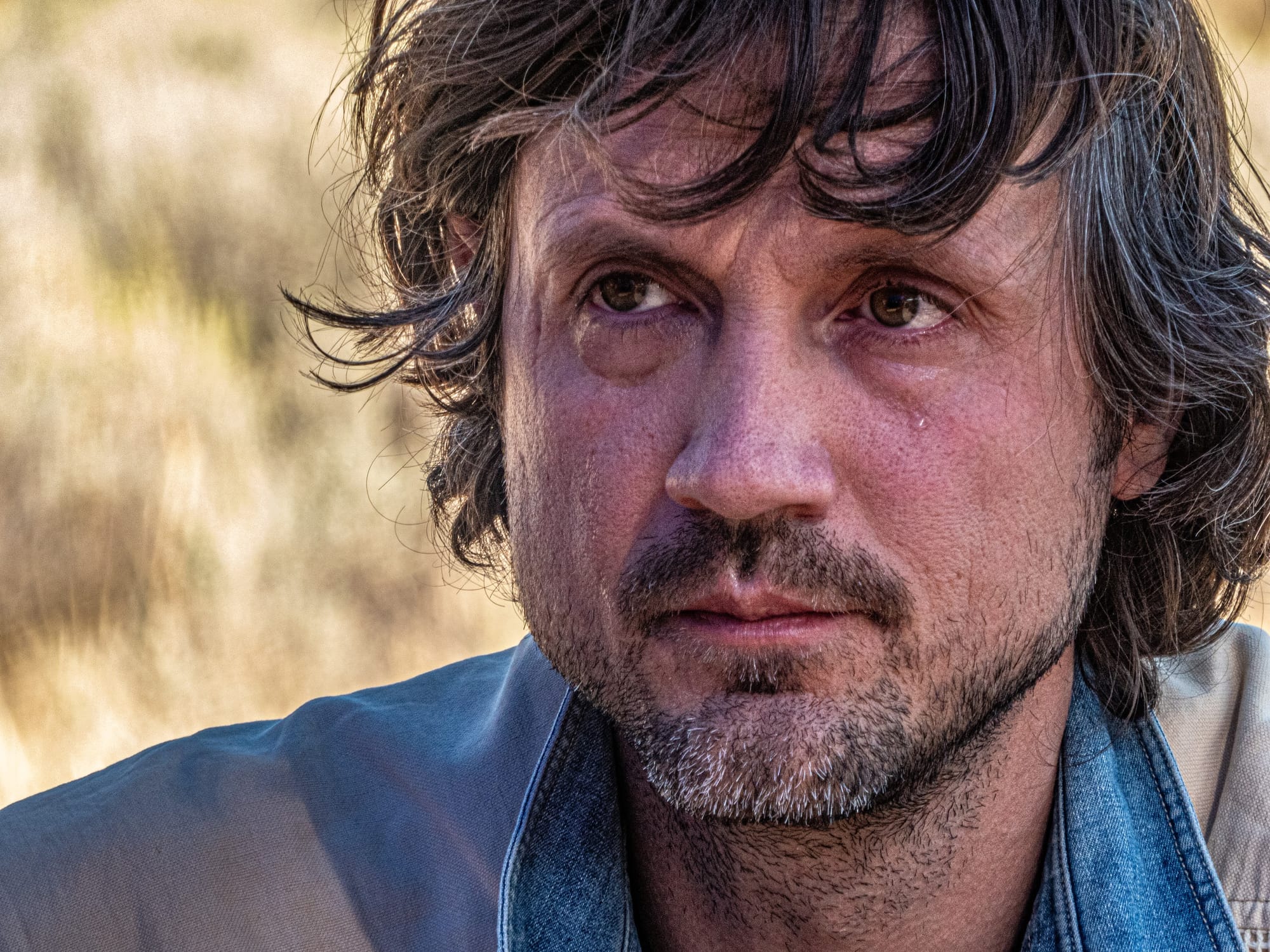
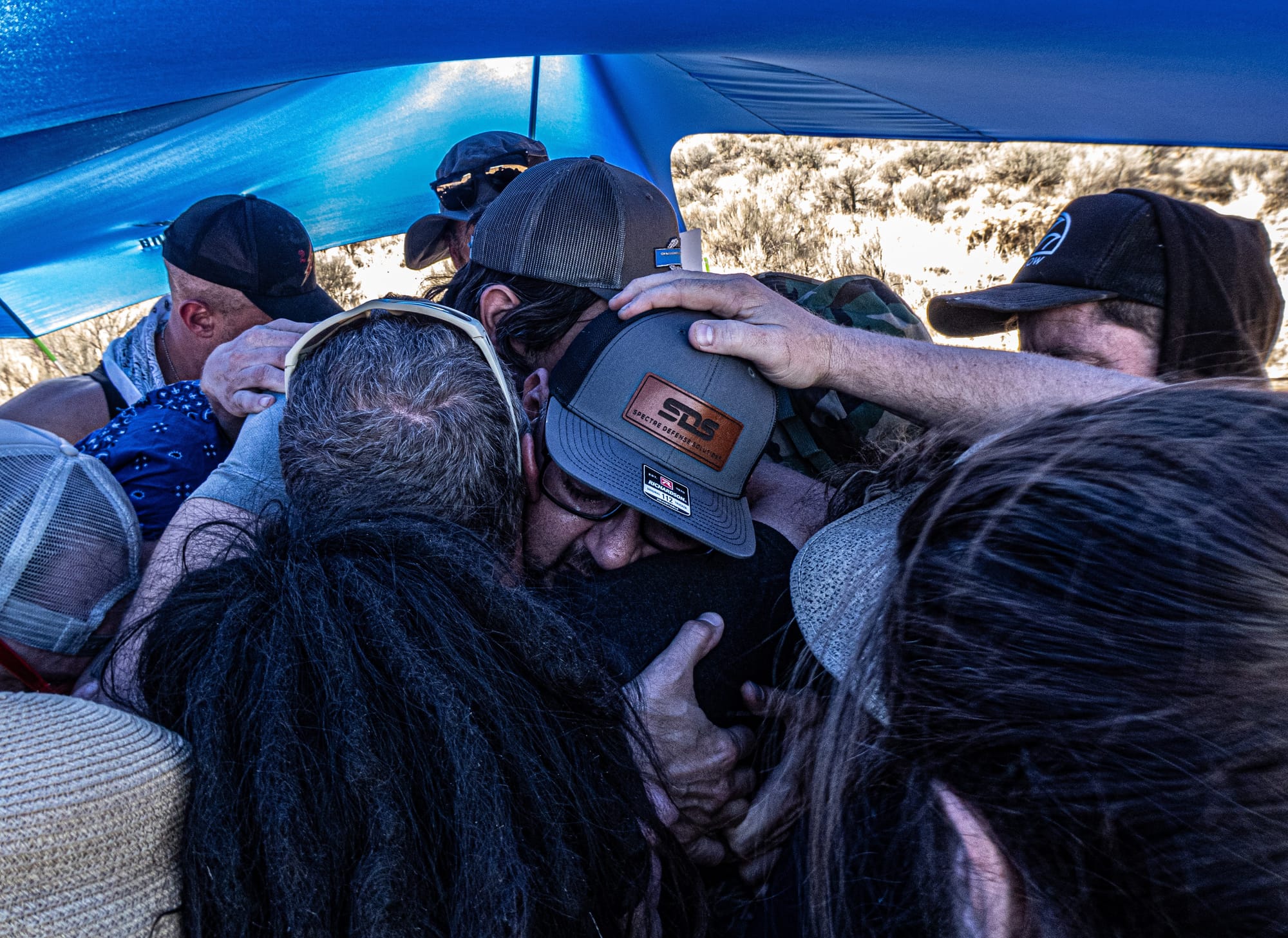
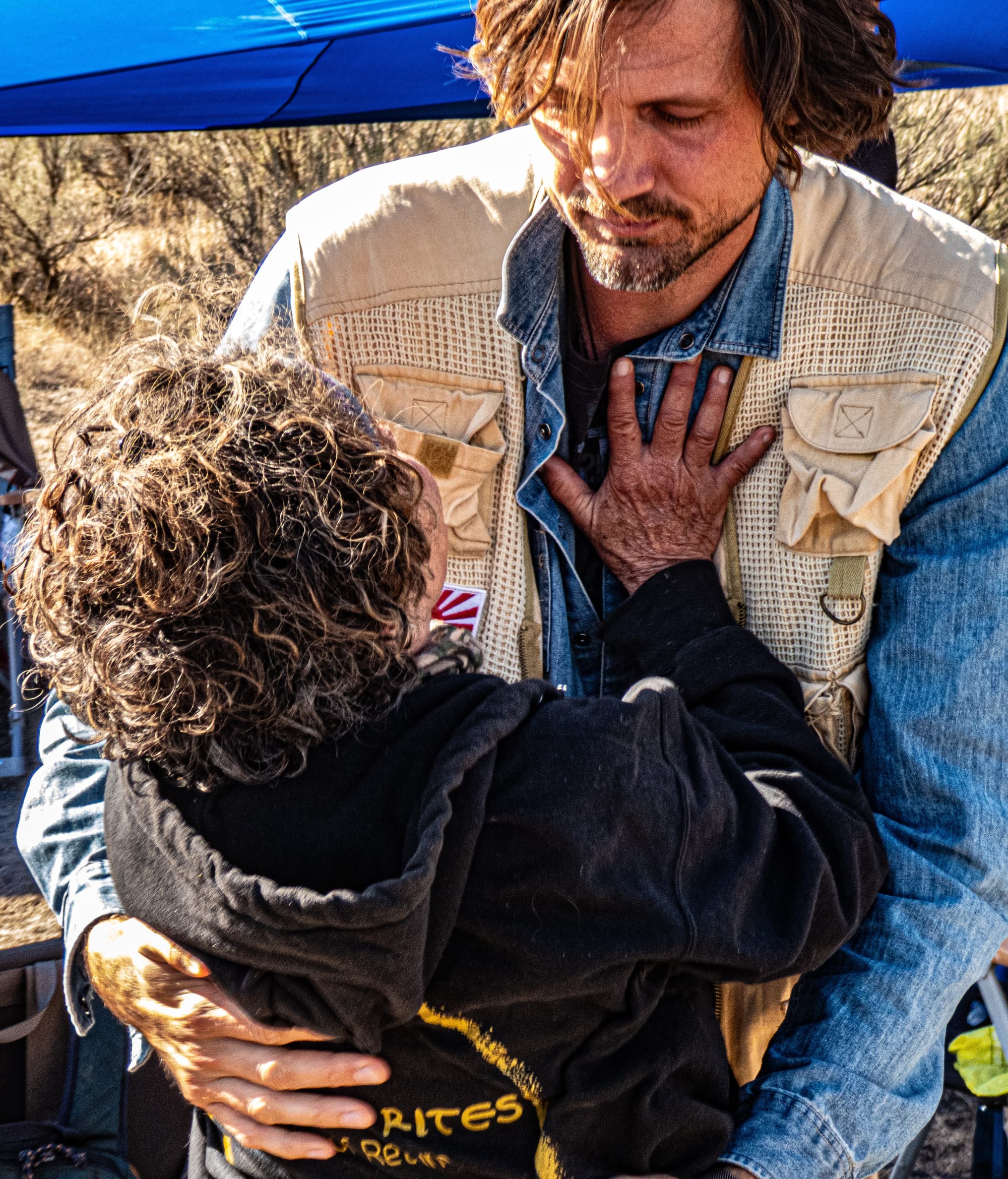
The touch I received before, during, and after sharing those stories melted away the pain attached to them.
I hadn’t just been heard; I’d been held in arms that felt like unshakable belonging.
It took fifteen years to share the full truth of what I was carrying inside. Fifteen years before I let outside tenderness in.
This project exists to help shorten that time for you.
Finding Touch & Community
Touch
Finding safe, agenda-free touch isn’t always easy, but it’s one of the strongest tools I know for easing both emotional and physical pain.
When I couldn’t get touch from someone I trusted, these things helped me keep going:
1. Touch from animals.
Dogs, cats, other pets, and even horses can give us safe, dependable connection.
There are also plenty of groups that connect Veterans with service animals or offer time on horse ranches and farms.
A few examples:
• Ranches
The “Operation We Are Here“ website has a long list of farm opportunities, as well as other resources.
• Service Dogs
And here’s a link to a document that has the contact information for over 50 organizations that work to provide Veterans with Service Dogs:
Organizations that Work to Provide Veterans with Service Dogs
Why Animals Can Help
Animals like dogs and horses have no agenda, no judgment, no expectations. They’re just there with us. That kind of presence calms the body. It’s also a good model for the kind of human connections worth looking for.
My dog Trucker deserves every hike we take, and every puzzle-toy I fill with treats. I don't want to imagine a world without dogs.
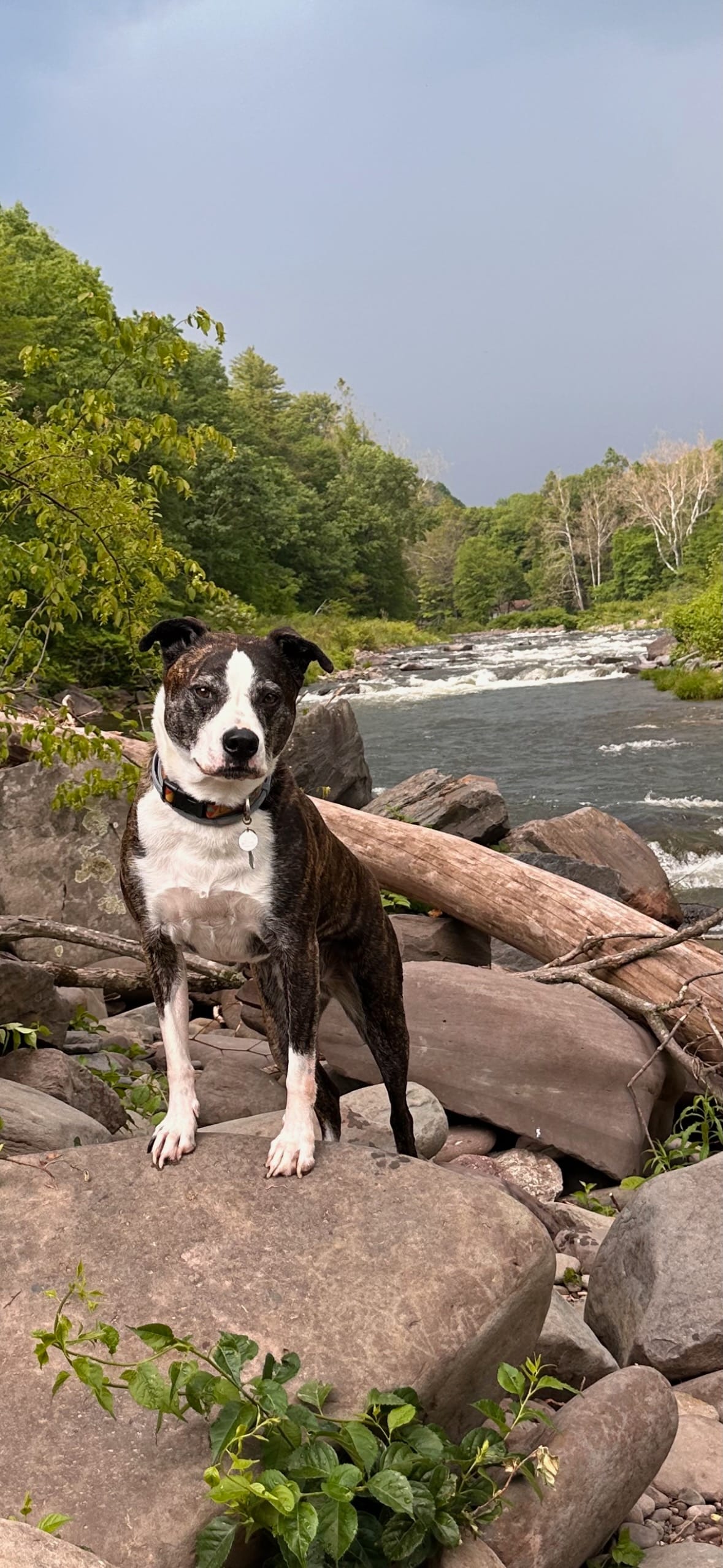

2. Being held by the land.
Nature can sometimes hold me in a way that feels like an embrace. Lying on thick grass, floating in water, or camping by a stream—these places have given me moments of deep rest. When we find safe spots in nature and make direct contact with the Earth, it can ease our pain a lot like being held by someone who loves us.
3. Professional human touch.
I’ve also found a lot of healing through professional bodyworkers. Not everyone was the right fit. For me, finding someone whose energy felt right mattered more than the technique they used.
Here are a few that helped me:
• Thai massage
• Ayurvedic massage
• Acupuncture
• AcroYoga
• Aquatic Bodywork (like Watsu)
• Platonic touch providers (like professional cuddlers)
• TVM Bodywork (Triple-Vagal Method)
• Cranial-Sacral Therapy
Try different methods and pay attention to which ones feel best in your body.
Five Levels of Touch
Touch is a powerful thing. But for many of us, it stopped feeling safe somewhere along the way.
For me, it helped to think of touch in levels.
I didn’t jump straight into human contact. I started where my body could relax. From there, I worked my way up.
Here’s how I break it down:
Level 1: Being Held by the Land
Alone in nature. Lying on the ground, feeling the earth under me. Surrounded by wildlife, insects, and plants. No pressure to talk, do, or be anything other than here.
Level 2: Safe Animal Touch
Leaving the ground, I sometimes found myself wanting to feel something warm and alive, with a heartbeat, but still without any pressure to speak or respond. Pets or service animals offer steady, judgment-free presence. If human contact feels risky, start here and take your time.
Level 3: Professionally Boundaried Human Touch
Massage therapists, acupuncturists, and even professional cuddlers can offer structured, safe, non-sexual touch. Clear boundaries make it easier to relax.
Level 4: Personal, Non-Sexual Touch
Eventually, you might feel ready for touch with trusted friends or loved ones. Holding hands, hugging, or sitting close can be deeply healing. It’s important to be clear about your comfort level.
Level 5: Sexual Intimacy
At the highest level of vulnerability, sexual touch can bring deep connection and healing. This is only possible when trust, safety, and boundaries are rock solid. Healthy sexual contact can help heal shame, dissociation, anxiety, low self-esteem, and more. Safe, consensual pleasure can release layers of stored tension in the body. The details are beyond the scope of this chapter, but I include this level to show what may be possible.
Telling Our Story at Each Level
Whatever level you’re at, you can pair it with sharing your story.
At Level 1, you might read it aloud to the land. At Level 4, you could share it with a friend while holding hands.
Each level offers its own kind of “ears”.
Start at a level where you’ve got solid support. That’s the foundation we’ll stand on as we step into community.
Community
When it comes to finding a close community, here’s the most important thing I’ve learned:
My stories build my community.
Writing about the hardest moments of my life helped me understand who I really was. The more I understood myself, the more I could share my truth. And the more I shared, the easier it became to find my people—the ones who actually needed the real me to show up.
I was careful about who I shared with. Not everyone needs to hear our full story. Some truths are damn vulnerable and meant only for those who have earned the right to hear them.
I took it slow at first. I shared small pieces and paid attention:
- Did their eyes stay with me, or drift away?
- Did they ask questions, or change the subject?
- Did they lean in, or sit back and glance at their buzzing phone notifications?
Few things hurt like a polite change in topic after sharing how our Service really affected us. A lot of us have given up on telling our story and gone numb to that kind of rejection.
But when I paid attention, I started finding the right people. We grew closer as they got closer to my truth. As my love for life came back, it lit something in them too.
If you don’t have a strong community yet, like I didn’t when I started, the story you’ve written so far can help you build one.
Explore what’s happening in your area. At first, I felt out of place at Veterans’ gatherings, but I kept showing up. Over time, those events led to other resources, and eventually, to my people.
It doesn’t always have to be Veteran-specific. Communities can grow around any shared interest—music, online gaming, woodworking, playing pool, or other hobbies. What matters is finding something you enjoy. Following my interests brought me to people who shared my values.
Try out different programs and environments. I got the most out of ones with outdoor group activities, story sharing, yoga, and alone time in nature.
Here are some examples:
• Veterans Rites (Full disclosure: I work part-time for Veterans Rites)
• Project Odyssey (Wounded Warrior Project)
All of these programs accept applications from Veterans nationwide.
Many of these programs will also give you the chance to share parts of your story. The work you’ve done here will help you make the most of that moment.
Touch and Community Can Be Separate
You might find your touch and community needs met in different places. Maybe your community is at a Veterans event or online gaming group, while your need for touch is met at home, with a pet, or in nature.
It’s okay if finding touch and community takes time. Connection often grows in small, consistent steps.
They’re like campfires: you build them slowly, add the right fuel, and enjoy the warmth.
My invitation: look for people who are ready to hear your full story—whether it’s a counselor, therapist, Veterans group, romantic partner, or close friend.
I start with a few sentences. I notice their eyes, their breath, their posture. These little cues tell me if I’m safe to go deeper.
I’ve met people whose presence felt like shelter. Around them, my shoulders dropped, my face relaxed, and my breath came easier. That was my body saying, I can be all of me here.
I invest in the people who welcome home all of me.
On Homecoming and Belonging
War journalist Sebastian Junger has a short book called Tribe: On Homecoming and Belonging. It explores the bonds created during military service, and the emptiness we can feel after if we never find real community.
Reading it helped me understand why I missed the closeness of military life, and how to bring that feeling back in ways that fit with the life I have now.
If you’re interested, check out the podcast and video below to hear directly from him.
A note I kept from the podcast:
People need community. When you take someone out of a platoon—maybe they were in a support unit, maybe they never got shot at, maybe nothing major ever happened—but when you take them out of that close-knit group and put them back into society, they’re gonna struggle. They’re human; we’re wired to be with others. And once we’ve been exposed to that kind of close community and then it's taken away, it’s very hard to maintain psychological health.” — Sebastian Junger, "Behind the Mission podcast #159 - Tribe and Veteran Connectedness
Starting by Giving
Finding healthy touch and a sense of tribe wasn’t easy or straightforward.
Plenty of times what I needed most was to be alone—sitting at home, smoking weed, having a drink, zoning out on a screen. Looking back, I see those things kept me safe. They kept me from hurting myself or anyone else.
But they also kept me isolated and numb.
For years, substances and distractions were my substitutes for touch and community. They hid the real issues and, over time, created new ones.
Even now, some days I pull back and isolate. Some days I lean on something to cope. Touch and community didn’t fix everything. But they cut the pain. With less pain, I don’t need to numb as much. New habits, like writing and sharing in council, help me handle what I feel without always falling back on screens or substances.
I found my people step by step. At first, I went to one veterans or community event a year. Then one every six months, then every three—always giving myself time to recover after.
My plan was simple: “I might not know where my crew is yet, but I can take steps to find them.”
At first, I didn’t want to talk. I stayed off to the side, letting other guys fill the air. But the more I showed up, the more I realized I wanted to be around people who could also listen to me.
That’s when my mentor David gave me a lesson I’ve never forgotten: give what I most want to get.
- I wanted people to hear me, so I made sure to really hear them.
- I wanted trust, so I kept my word.
- I wanted to feel safe around people, so I got clear about my own intentions.
- I wanted strong leaders, so I looked at my own strengths and worked on them.
If you don’t have the support you need yet, don’t let it stop you.
This takes time. I still remind myself:
• Choose carefully who I invest in and trust.
• Keep showing up.
• Notice who talks—and who really listens.
Too often, I went to the wrong people and shared my truth with folks who couldn’t handle it. That just made me lonelier.
As I mentioned earlier, start by looking for people who might be open to your story. Before asking for something, give them what you want in return. If you want judgment-free listening without advice or fixing, listen to them that way first.
End of Part I, and Moving Forward
We’ve reached the end of the writing part of Part 1.
Our goal was to tell the most accurate version of “What Happened?” while honoring our inner reality—the version our body’s been carrying all this time.
Before we move on, there’s another piece worth mentioning.
For some of us, easing stuck pain and bringing our old stories home means having the harm we faced officially recognized. That might happen through the Veterans Administration (VA).
Working with the VA can sometimes be easy, other times it can be stressful and draining. Before diving into that bureaucracy, it helps to have reliable sources of Touch and Community in place.
If you have filed or might file soon, continue to Chapter 11: Writing Successful VA Claims
If you’re not filing a VA claim, this wraps up Part 1.
Take a breath to notice what you've accomplished. You've told the truth as your body knows it.
That story is yours now—solid as the ground under your feet.
Now we step into Part II: Feeling What Happened, starting with Chapter 12: Living From the Neck Up